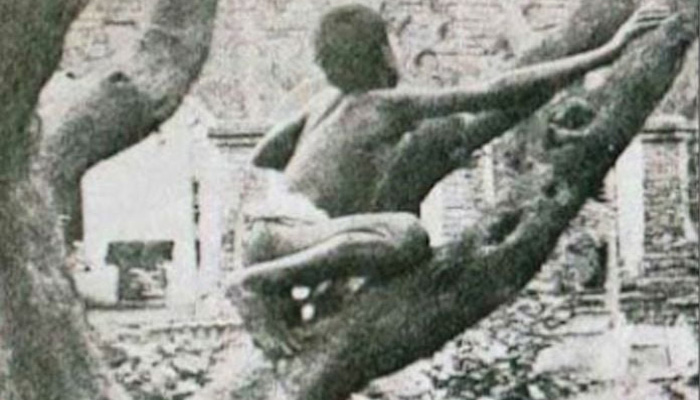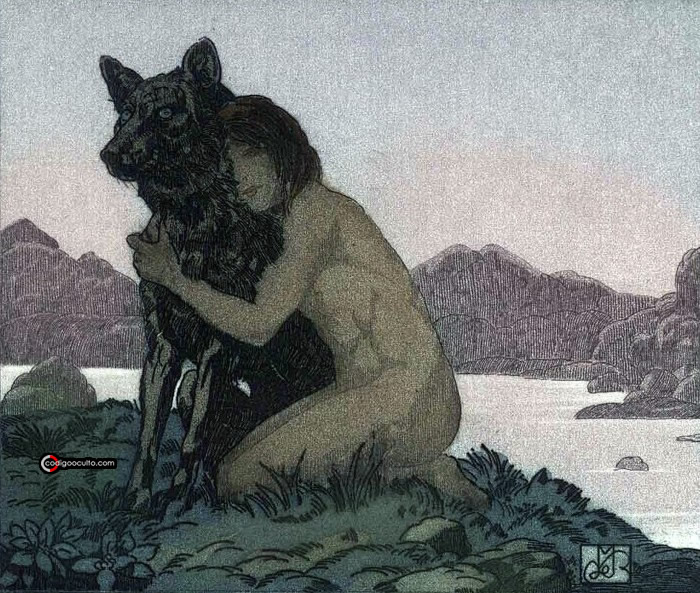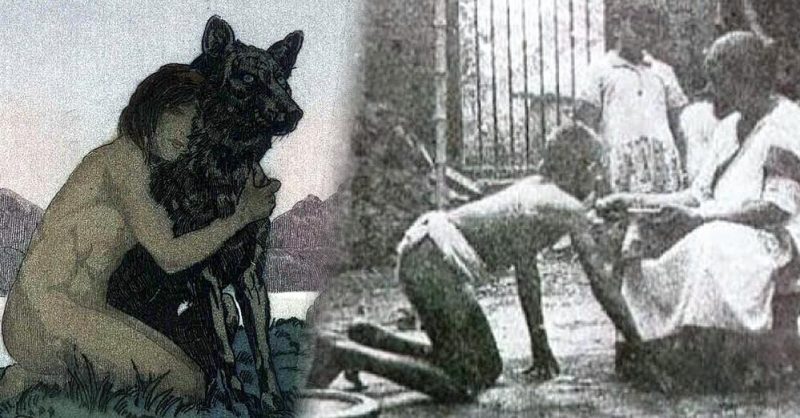Rudyard Kipling’s The Jungle Book tells the story of Mowgli, a boy raised by wolves who never learned to live with other humans. The story was so famous that Disney and other companies adapted it into movies and series. However, very few people know that the novel is inspired by a tragic real event .
What defines us as human beings ? Our anatomy, our behavior or our instinct? It could be said that each of these things makes us human and society is what makes us rational people.
However, what happens when all social traces and human interaction are removed and replaced by an animal? That is what Dina Sanichar lived through, a girl who grew up totally isolated from society , and was raised by wolves.
Dina Saichar, human raised by wolves?

In February 1867, hunters were in the jungle of Bulandshahr , in India, when they came across wolves entering a cave.
As the region was under constant attack from wolves , they decided to hunt them down. They placed sticks and later set on fire so that the smoke would carry the ferocious wolves out of the cave.
Instantly, the wolves came out and the hunters did their job. However, something unexpected happened; a last figure emerged from the smoke , coughing and growling, but it was not a wolf, it was a small girl of approximately 6 years , walking on all fours.
Despite the fact that he was clearly a human child, he bit, snarled, and growled like an animal; hunters described her as extremely restless, with prominent teeth and very hairy.
The men could not even get close to the girl and were only able to capture her when she ran out of strength to continue fighting. As a curiosity, they said that with his last energies, he approached one of the dead wolves and huddled in his fur, as if crying his departure .
Not knowing what to do with the perhaps misnamed “wild child”, they decided to take him to the Sikandra Mission Orphanage , where they baptized her and named her Dina “Sanichar”, which means “Saturday”, the day they took her.
The attempt to adapt to society

The orphanage did everything it could to help the little girl adapt to life in society. However, everything was very complicated.
He did not allow himself to be dressed, and if they did, he would immediately rip off his clothes . In addition, he only ate raw meat and rejected any other type of food. He had a habit of sharpening his teeth gnashing bones and, worst of all, he showed no human emotion . Don’t even smile.
The missionaries were never able to make Sanichar speak, for he did not understand even the simplest of words. Even so, it showed more intelligence than that of a wolf since it did learn certain things, such as standing up or drinking from a cup.
Over the years, the girl became more docile , but still did not show any kind of bond with another person. The only being that showed any sign of “friendship” was with another wild child who was taken to the orphanage.
The children quickly became inseparable, frolicking on all fours, snuggling together at night, even teaching him to drink from his cup.
It is said that when the other boy died of unknown causes, Sanichar was howling for days. It was the first and only sign of sadness he showed.
As the years went by, and the longer she stayed in the orphanage, the infant learned more human behaviors; He no longer took off his clothes, he could stand up, he did not show fear. Although he never learned to speak and still did not understand signs very well. Interestingly, the only human habit he developed was smoking.
Other wild children?

Missionaries say that Dina Sanichar was not the only wild child to live in the Sikandra Mission Orphanage. In addition to his “friend,” the superintendent, Erhardt Lewis, stated that he was joined by 2 boys and 1 girl who had also been raised by wolves .
It is also said that the orphanage took in so many wild children, that it became normal. In fact, several stories of children raised by wolves appeared throughout India during the 20th century.
Most of the cases, these children were cared for by the missionaries and they became the sole source of the facts , so the debate whether this was true or not continues.
Some historians believe that the missionaries made up these stories, to get media attention and thus obtain more resources. Others suggest that these children were not raised by animals and that they only had some intellectual or physical disability .
In that case, the stories could be told by people who jumped to conclusions when they visited the orphanage.
Whatever the case, Dina Sinachar is believed to have died between the ages of 29 and 30 due to tuberculosis. Some say it was because of his addiction to tobacco.









